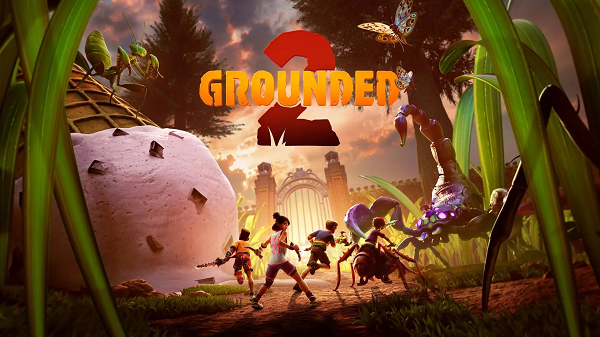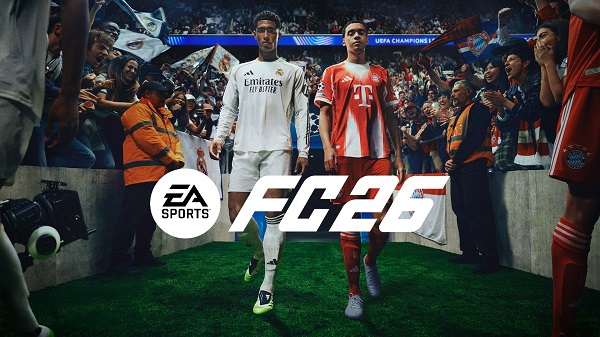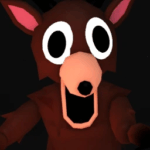Advertisement
Popular Now
The Bayonetta series, developed by PlatinumGames, is renowned for its stylish, high-octane combat, over-the-top narrative, and iconic protagonist, a witch who wields magical hair and unparalleled confidence. Since its debut in 2009, the series has set a benchmark for the character action genre, drawing comparisons to Devil May Cry and Ninja Gaiden. However, beneath its polished surface lies a persistent issue that has sparked debate among players and critics alike: the camera system. The camera in Bayonetta, across all three mainline titles, often struggles to keep pace with the frenetic action, leading to gameplay frustrations that can detract from the otherwise sublime experience. This article delves deeply into the camera’s shortcomings, analyzing its impact on combat, exploration, and player immersion, while tracing its evolution—or lack thereof—through Bayonetta (2009), Bayonetta 2 (2014), and Bayonetta 3 (2022). Through a structured examination, we’ll uncover why the camera remains a contentious flaw and explore potential solutions for future entries.
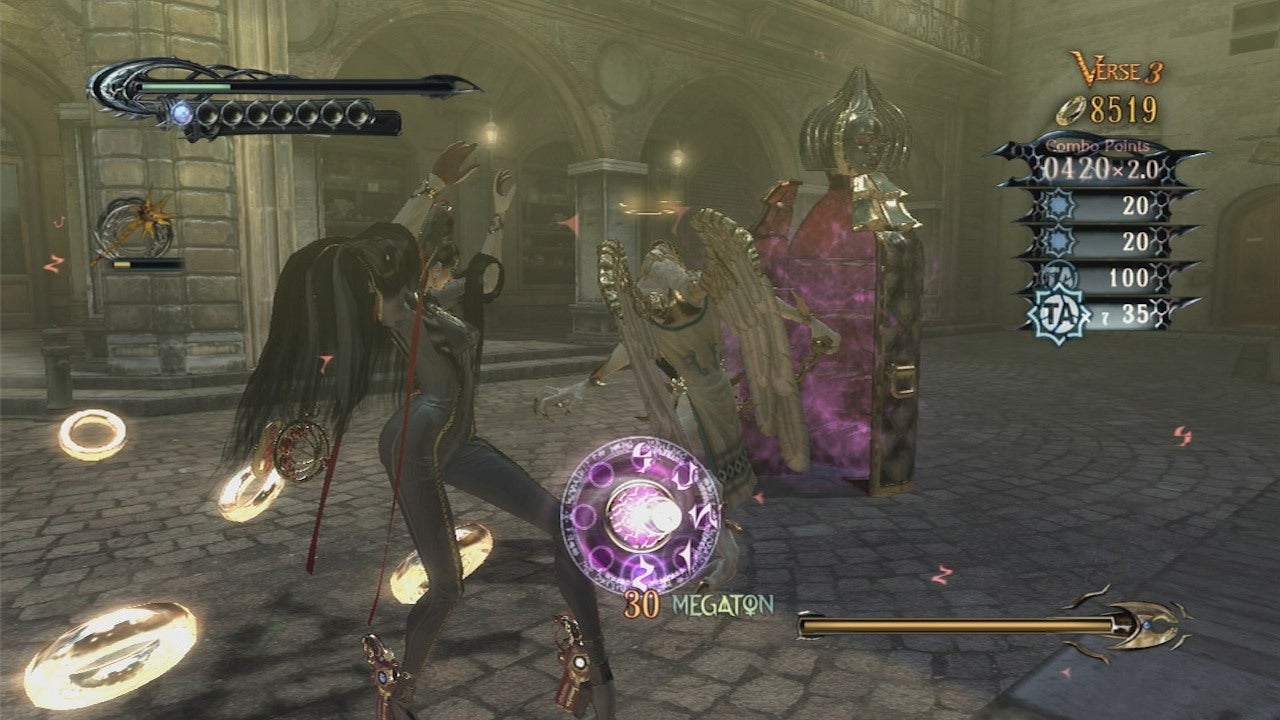 When Bayonetta launched in 2009, it dazzled players with its intricate combo system and visually stunning set pieces. However, the camera quickly emerged as a point of contention. Designed to provide a third-person perspective, the camera often failed to track enemies effectively during intense battles, especially when multiple foes attacked from off-screen. This issue was particularly pronounced in tight arenas, where the camera could clip through walls or zoom in too closely, obscuring Bayonetta’s position relative to enemies. The result was a loss of situational awareness, forcing players to rely on audio cues or guesswork to dodge attacks.
The camera’s behavior was tied to the game’s ambitious scope. PlatinumGames aimed to create a dynamic battlefield with enemies approaching from all angles, but the camera struggled to prioritize relevant threats. For example, during fights with the Auditio (Cardinal Virtues), the camera would sometimes focus on the boss’s massive model, leaving smaller minions off-screen. This design choice, while cinematic, compromised gameplay precision, a critical factor in a game that demands split-second timing for Witch Time activation. The PlayStation 3 version exacerbated these issues with longer load times and frame rate dips, making camera adjustments feel sluggish compared to the Xbox 360 release.
When Bayonetta launched in 2009, it dazzled players with its intricate combo system and visually stunning set pieces. However, the camera quickly emerged as a point of contention. Designed to provide a third-person perspective, the camera often failed to track enemies effectively during intense battles, especially when multiple foes attacked from off-screen. This issue was particularly pronounced in tight arenas, where the camera could clip through walls or zoom in too closely, obscuring Bayonetta’s position relative to enemies. The result was a loss of situational awareness, forcing players to rely on audio cues or guesswork to dodge attacks.
The camera’s behavior was tied to the game’s ambitious scope. PlatinumGames aimed to create a dynamic battlefield with enemies approaching from all angles, but the camera struggled to prioritize relevant threats. For example, during fights with the Auditio (Cardinal Virtues), the camera would sometimes focus on the boss’s massive model, leaving smaller minions off-screen. This design choice, while cinematic, compromised gameplay precision, a critical factor in a game that demands split-second timing for Witch Time activation. The PlayStation 3 version exacerbated these issues with longer load times and frame rate dips, making camera adjustments feel sluggish compared to the Xbox 360 release.
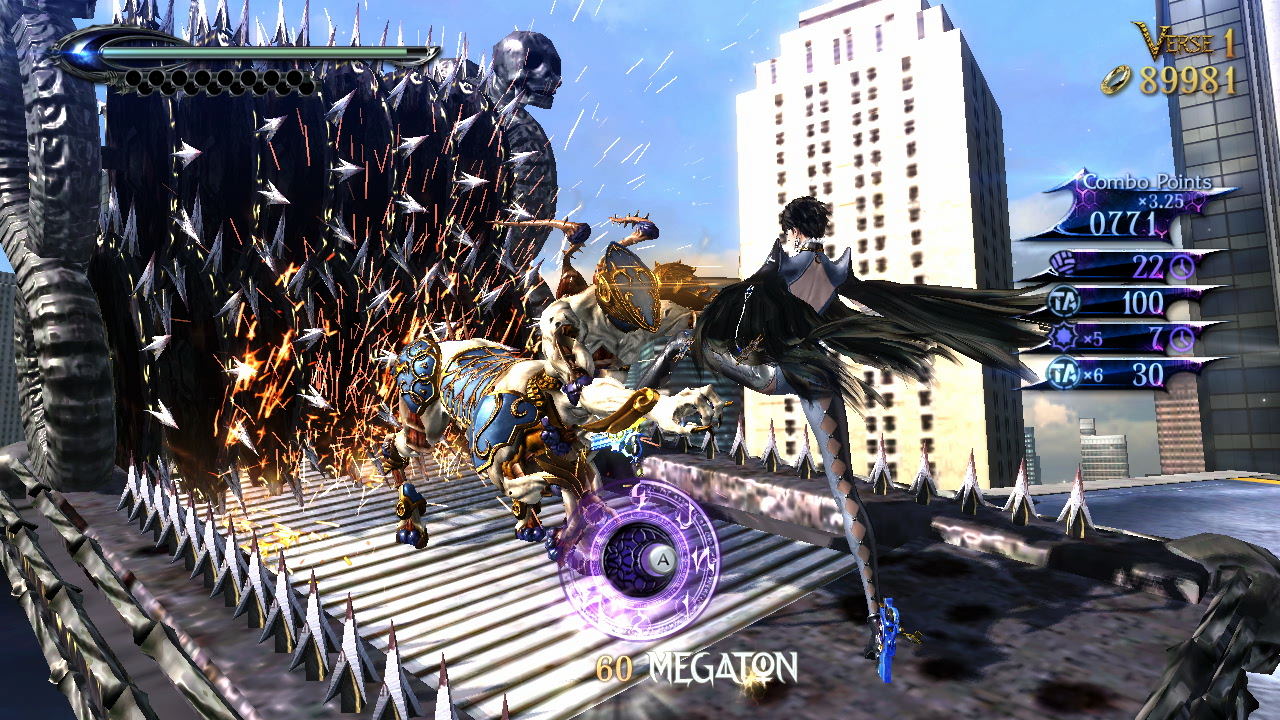 Bayonetta 2, released exclusively for the Wii U in 2014, promised refinements to the original’s formula. PlatinumGames acknowledged player feedback and made efforts to improve the camera system. The sequel featured a slightly more responsive camera, with better enemy tracking in open arenas. The Wii U’s hardware, while not significantly more powerful than its predecessors, allowed for a more stable frame rate, reducing the lag that plagued the PS3 version of the first game. The camera also benefited from cleaner level design, with fewer tight spaces that caused clipping issues.
However, the improvements were incremental rather than transformative. In large-scale battles, such as those against the new Infernal Demons, the camera still struggled to maintain focus when enemies attacked from multiple directions. The introduction of Umbran Climax, a powerful state that summoned massive demons, further complicated matters. The camera would zoom out to capture the spectacle, but this often left Bayonetta’s position unclear, making it difficult to dodge smaller enemy attacks. While Bayonetta 2’s camera was less intrusive than its predecessor’s, it remained a weak link in an otherwise polished experience.
Bayonetta 2, released exclusively for the Wii U in 2014, promised refinements to the original’s formula. PlatinumGames acknowledged player feedback and made efforts to improve the camera system. The sequel featured a slightly more responsive camera, with better enemy tracking in open arenas. The Wii U’s hardware, while not significantly more powerful than its predecessors, allowed for a more stable frame rate, reducing the lag that plagued the PS3 version of the first game. The camera also benefited from cleaner level design, with fewer tight spaces that caused clipping issues.
However, the improvements were incremental rather than transformative. In large-scale battles, such as those against the new Infernal Demons, the camera still struggled to maintain focus when enemies attacked from multiple directions. The introduction of Umbran Climax, a powerful state that summoned massive demons, further complicated matters. The camera would zoom out to capture the spectacle, but this often left Bayonetta’s position unclear, making it difficult to dodge smaller enemy attacks. While Bayonetta 2’s camera was less intrusive than its predecessor’s, it remained a weak link in an otherwise polished experience.
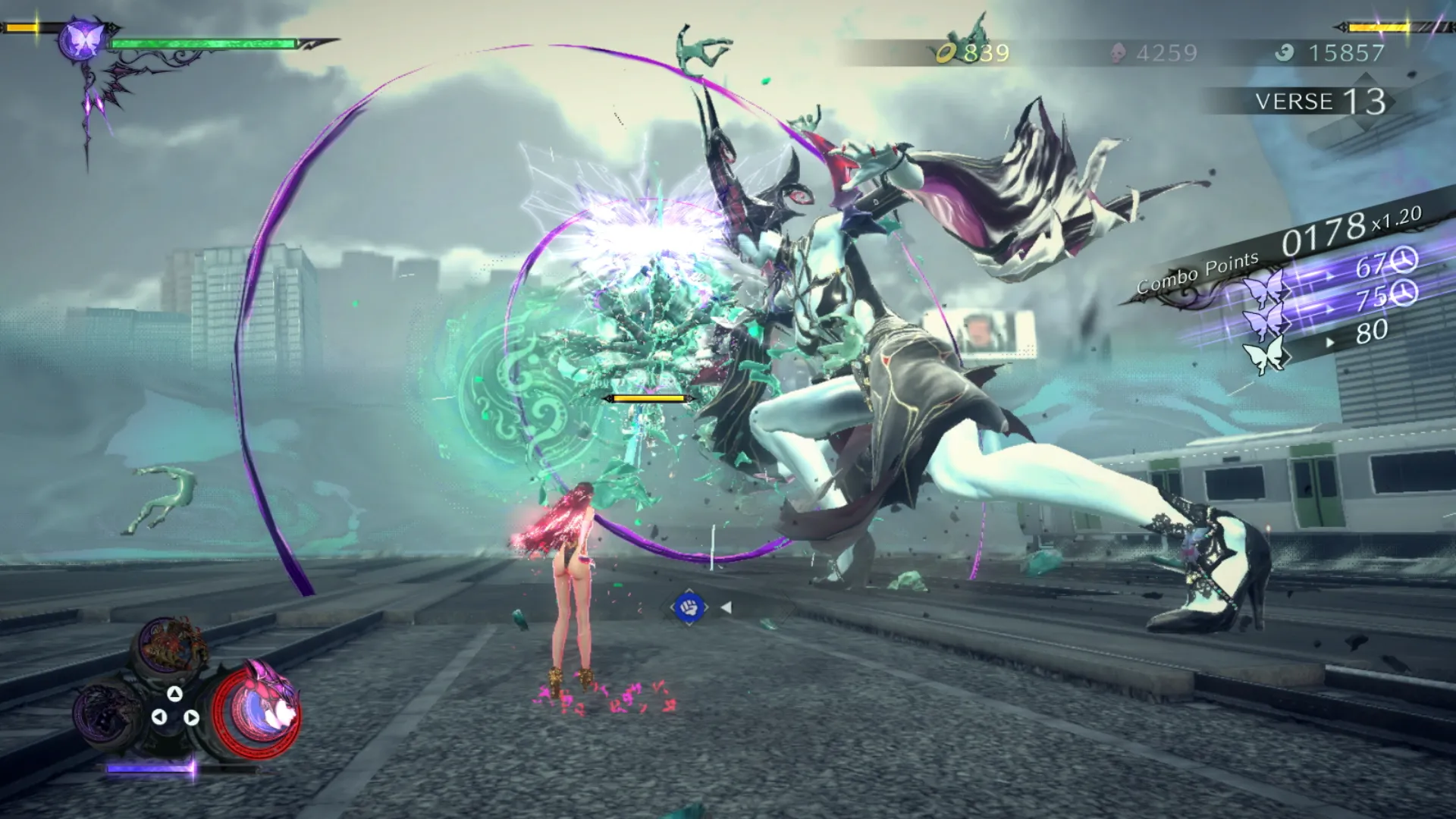 Bayonetta 3, released for the Nintendo Switch in 2022, pushed the series’ ambition to new heights with larger environments, multiple playable characters, and the Demon Slave mechanic. However, the camera system took a step backward, exacerbated by the game’s expanded scope. The larger arenas, designed to accommodate massive Homunculi enemies and demon summons, forced the camera to zoom out frequently, reducing Bayonetta’s visibility and making precise dodging difficult. Digital Foundry noted that the camera often clipped through enemies and scenery, a regression from Bayonetta 2’s cleaner presentation.
The introduction of Viola, a new playable character with a distinct combat style, highlighted additional camera issues. Viola’s reliance on her autonomous demon, Cheshire, required the camera to track both her and the demon, often leading to disorienting shifts in perspective. During multiverse battles, where alternate Bayonettas appeared, the camera struggled to prioritize the player’s character, resulting in confusion. The game’s unstable frame rate, dipping below 60 fps even in empty areas, further compounded these issues, making the camera feel unresponsive during critical moments.
Bayonetta 3, released for the Nintendo Switch in 2022, pushed the series’ ambition to new heights with larger environments, multiple playable characters, and the Demon Slave mechanic. However, the camera system took a step backward, exacerbated by the game’s expanded scope. The larger arenas, designed to accommodate massive Homunculi enemies and demon summons, forced the camera to zoom out frequently, reducing Bayonetta’s visibility and making precise dodging difficult. Digital Foundry noted that the camera often clipped through enemies and scenery, a regression from Bayonetta 2’s cleaner presentation.
The introduction of Viola, a new playable character with a distinct combat style, highlighted additional camera issues. Viola’s reliance on her autonomous demon, Cheshire, required the camera to track both her and the demon, often leading to disorienting shifts in perspective. During multiverse battles, where alternate Bayonettas appeared, the camera struggled to prioritize the player’s character, resulting in confusion. The game’s unstable frame rate, dipping below 60 fps even in empty areas, further compounded these issues, making the camera feel unresponsive during critical moments.
 The camera issues in Bayonetta stand in stark contrast to other character action games like Devil May Cry 5 (2019) and Ninja Gaiden Sigma (2007). Devil May Cry 5’s camera uses dynamic adjustments to keep enemies in view, even in crowded battles, while Ninja Gaiden’s fixed camera angles, though restrictive, ensure predictability. Bayonetta’s camera, by comparison, feels overly ambitious, attempting to balance cinematic flair with functional gameplay but falling short in both.
PlatinumGames’ own Astral Chain (2019) offers a more stable camera system, using a semi-fixed perspective to maintain clarity during chaotic fights. This suggests that the studio is capable of addressing camera issues but has not prioritized them for the Bayonetta series. The comparison underscores the need for a more disciplined approach to camera design in future entries.
The camera issues in Bayonetta stand in stark contrast to other character action games like Devil May Cry 5 (2019) and Ninja Gaiden Sigma (2007). Devil May Cry 5’s camera uses dynamic adjustments to keep enemies in view, even in crowded battles, while Ninja Gaiden’s fixed camera angles, though restrictive, ensure predictability. Bayonetta’s camera, by comparison, feels overly ambitious, attempting to balance cinematic flair with functional gameplay but falling short in both.
PlatinumGames’ own Astral Chain (2019) offers a more stable camera system, using a semi-fixed perspective to maintain clarity during chaotic fights. This suggests that the studio is capable of addressing camera issues but has not prioritized them for the Bayonetta series. The comparison underscores the need for a more disciplined approach to camera design in future entries.
Origins of the Camera Issue in Bayonetta (2009)
 When Bayonetta launched in 2009, it dazzled players with its intricate combo system and visually stunning set pieces. However, the camera quickly emerged as a point of contention. Designed to provide a third-person perspective, the camera often failed to track enemies effectively during intense battles, especially when multiple foes attacked from off-screen. This issue was particularly pronounced in tight arenas, where the camera could clip through walls or zoom in too closely, obscuring Bayonetta’s position relative to enemies. The result was a loss of situational awareness, forcing players to rely on audio cues or guesswork to dodge attacks.
The camera’s behavior was tied to the game’s ambitious scope. PlatinumGames aimed to create a dynamic battlefield with enemies approaching from all angles, but the camera struggled to prioritize relevant threats. For example, during fights with the Auditio (Cardinal Virtues), the camera would sometimes focus on the boss’s massive model, leaving smaller minions off-screen. This design choice, while cinematic, compromised gameplay precision, a critical factor in a game that demands split-second timing for Witch Time activation. The PlayStation 3 version exacerbated these issues with longer load times and frame rate dips, making camera adjustments feel sluggish compared to the Xbox 360 release.
When Bayonetta launched in 2009, it dazzled players with its intricate combo system and visually stunning set pieces. However, the camera quickly emerged as a point of contention. Designed to provide a third-person perspective, the camera often failed to track enemies effectively during intense battles, especially when multiple foes attacked from off-screen. This issue was particularly pronounced in tight arenas, where the camera could clip through walls or zoom in too closely, obscuring Bayonetta’s position relative to enemies. The result was a loss of situational awareness, forcing players to rely on audio cues or guesswork to dodge attacks.
The camera’s behavior was tied to the game’s ambitious scope. PlatinumGames aimed to create a dynamic battlefield with enemies approaching from all angles, but the camera struggled to prioritize relevant threats. For example, during fights with the Auditio (Cardinal Virtues), the camera would sometimes focus on the boss’s massive model, leaving smaller minions off-screen. This design choice, while cinematic, compromised gameplay precision, a critical factor in a game that demands split-second timing for Witch Time activation. The PlayStation 3 version exacerbated these issues with longer load times and frame rate dips, making camera adjustments feel sluggish compared to the Xbox 360 release.
Early Player Feedback
Community forums and reviews highlighted the camera as a significant flaw. Players noted that manual camera adjustments using the right analog stick often felt unresponsive, especially when locked onto enemies. This led to moments where Bayonetta was hit by unseen attacks, undermining the game’s otherwise rewarding skill-based combat.Technical Limitations of the PS3 and Xbox 360 Era
The camera issues in Bayonetta (2009) were partly a product of the hardware constraints of seventh-generation consoles. The PlayStation 3 and Xbox 360 struggled to render the game’s detailed environments and enemy models at a consistent 60 frames per second, which impacted the camera’s responsiveness. On the PS3, frame rate drops during crowded battles caused the camera to lag, making it harder to track fast-moving enemies like Grace and Glory. The Xbox 360 fared better, but even here, the camera’s tendency to clip through environmental objects persisted. PlatinumGames’ design philosophy prioritized spectacle over technical polish, a choice that amplified camera problems. The game’s levels, such as Vigrid’s winding streets, featured complex geometry that the camera struggled to navigate. For instance, during the motorcycle chase sequence, the camera’s fixed perspective often obscured incoming obstacles, leading to unavoidable damage. These technical limitations set the stage for a recurring issue that would haunt the series, as the camera became a bottleneck for delivering the seamless experience PlatinumGames envisioned.Hardware-Specific Challenges
- PS3: Frame rate drops and longer load times worsened camera lag.
- Xbox 360: Smoother performance but persistent clipping issues.
Camera Improvements Attempted in Bayonetta 2 (2014)
 Bayonetta 2, released exclusively for the Wii U in 2014, promised refinements to the original’s formula. PlatinumGames acknowledged player feedback and made efforts to improve the camera system. The sequel featured a slightly more responsive camera, with better enemy tracking in open arenas. The Wii U’s hardware, while not significantly more powerful than its predecessors, allowed for a more stable frame rate, reducing the lag that plagued the PS3 version of the first game. The camera also benefited from cleaner level design, with fewer tight spaces that caused clipping issues.
However, the improvements were incremental rather than transformative. In large-scale battles, such as those against the new Infernal Demons, the camera still struggled to maintain focus when enemies attacked from multiple directions. The introduction of Umbran Climax, a powerful state that summoned massive demons, further complicated matters. The camera would zoom out to capture the spectacle, but this often left Bayonetta’s position unclear, making it difficult to dodge smaller enemy attacks. While Bayonetta 2’s camera was less intrusive than its predecessor’s, it remained a weak link in an otherwise polished experience.
Bayonetta 2, released exclusively for the Wii U in 2014, promised refinements to the original’s formula. PlatinumGames acknowledged player feedback and made efforts to improve the camera system. The sequel featured a slightly more responsive camera, with better enemy tracking in open arenas. The Wii U’s hardware, while not significantly more powerful than its predecessors, allowed for a more stable frame rate, reducing the lag that plagued the PS3 version of the first game. The camera also benefited from cleaner level design, with fewer tight spaces that caused clipping issues.
However, the improvements were incremental rather than transformative. In large-scale battles, such as those against the new Infernal Demons, the camera still struggled to maintain focus when enemies attacked from multiple directions. The introduction of Umbran Climax, a powerful state that summoned massive demons, further complicated matters. The camera would zoom out to capture the spectacle, but this often left Bayonetta’s position unclear, making it difficult to dodge smaller enemy attacks. While Bayonetta 2’s camera was less intrusive than its predecessor’s, it remained a weak link in an otherwise polished experience.
Notable Enhancements
The camera’s lock-on system was tweaked to prioritize closer enemies, and manual adjustments felt slightly more fluid. However, these changes were not enough to eliminate off-screen attacks entirely.Porting to New Platforms: PC and Switch (2017–2018)
The PC port of Bayonetta in 2017 and the Nintendo Switch ports of both Bayonetta and Bayonetta 2 in 2018 offered opportunities to address the camera issues with modern hardware. The PC version, praised for its 4K support and stable 60 fps, significantly improved camera responsiveness. Higher frame rates reduced the perception of lag during manual adjustments, and the game’s arbitrary resolution support allowed players to widen their field of view, mitigating some visibility issues. However, the core camera logic remained unchanged, meaning clipping and off-screen attacks persisted. On the Switch, the portable mode introduced new challenges. Bayonetta 2’s resolution dropped to below 720p in handheld mode, which, combined with the smaller screen, made it harder to track enemies when the camera zoomed out. The Switch’s docked mode offered a smoother experience, but the camera’s tendency to clip through large bosses, like the demon Sloth, remained. These ports demonstrated that while hardware improvements could alleviate some camera-related frustrations, the underlying design flaws required more substantial overhauls.PC Port Advantages
- Stable 60 fps reduced camera lag.
- Customizable resolutions improved field of view.
Bayonetta 3 (2022): Ambitious Scale, Persistent Problems
 Bayonetta 3, released for the Nintendo Switch in 2022, pushed the series’ ambition to new heights with larger environments, multiple playable characters, and the Demon Slave mechanic. However, the camera system took a step backward, exacerbated by the game’s expanded scope. The larger arenas, designed to accommodate massive Homunculi enemies and demon summons, forced the camera to zoom out frequently, reducing Bayonetta’s visibility and making precise dodging difficult. Digital Foundry noted that the camera often clipped through enemies and scenery, a regression from Bayonetta 2’s cleaner presentation.
The introduction of Viola, a new playable character with a distinct combat style, highlighted additional camera issues. Viola’s reliance on her autonomous demon, Cheshire, required the camera to track both her and the demon, often leading to disorienting shifts in perspective. During multiverse battles, where alternate Bayonettas appeared, the camera struggled to prioritize the player’s character, resulting in confusion. The game’s unstable frame rate, dipping below 60 fps even in empty areas, further compounded these issues, making the camera feel unresponsive during critical moments.
Bayonetta 3, released for the Nintendo Switch in 2022, pushed the series’ ambition to new heights with larger environments, multiple playable characters, and the Demon Slave mechanic. However, the camera system took a step backward, exacerbated by the game’s expanded scope. The larger arenas, designed to accommodate massive Homunculi enemies and demon summons, forced the camera to zoom out frequently, reducing Bayonetta’s visibility and making precise dodging difficult. Digital Foundry noted that the camera often clipped through enemies and scenery, a regression from Bayonetta 2’s cleaner presentation.
The introduction of Viola, a new playable character with a distinct combat style, highlighted additional camera issues. Viola’s reliance on her autonomous demon, Cheshire, required the camera to track both her and the demon, often leading to disorienting shifts in perspective. During multiverse battles, where alternate Bayonettas appeared, the camera struggled to prioritize the player’s character, resulting in confusion. The game’s unstable frame rate, dipping below 60 fps even in empty areas, further compounded these issues, making the camera feel unresponsive during critical moments.
Viola’s Unique Challenges
Viola’s combat required precise timing for parries, but the camera’s erratic behavior made it hard to anticipate enemy attacks, especially when Cheshire was active.Impact on Combat Precision and Witch Time
The camera’s shortcomings directly undermine Bayonetta’s core mechanic: Witch Time, a slow-motion state triggered by perfectly timed dodges. In all three games, off-screen attacks disrupt players’ ability to activate Witch Time, as they cannot see incoming threats. This is particularly frustrating in Bayonetta 3, where larger enemies and zoomed-out perspectives make it harder to read attack telegraphs. The camera’s failure to provide a clear view of the battlefield turns a skill-based system into a game of chance, contradicting the series’ emphasis on mastery. In competitive play, such as Pure Platinum rank challenges, the camera’s unpredictability forces players to memorize enemy patterns rather than react organically. While this can enhance replayability for dedicated fans, it alienates casual players who expect a more intuitive experience. The camera’s impact on combat precision highlights a disconnect between PlatinumGames’ design goals and the technical execution of the camera system.Affected Mechanics
- Witch Time: Requires precise dodging, hindered by off-screen attacks.
- Combo Execution: Disrupted by camera shifts during multi-enemy fights.
Exploration and Environmental Interaction
Beyond combat, the camera affects exploration in the Bayonetta series. In Bayonetta (2009), hidden items like Angelic Hymns were often obscured by the camera’s awkward angles in cramped spaces. Bayonetta 2 improved this with more open levels, but Bayonetta 3’s larger environments introduced new problems. The camera’s zoomed-out perspective made it difficult to spot collectibles, such as Umbran Tears, especially in portable mode. The camera also struggles during platforming sequences. In Bayonetta 3’s side missions, like Jeanne’s stealth sections, the camera’s fixed angles often obscured ledges or enemies, leading to unfair deaths. These issues suggest that the camera was not adequately tested for non-combat scenarios, further limiting the series’ versatility.Exploration Pain Points
Players reported missing collectibles due to the camera’s tendency to focus on distant scenery rather than nearby interactable objects.Community Workarounds and Mods
The Bayonetta community has developed workarounds to mitigate camera issues, particularly on PC. Mods like custom field-of-view adjustments and camera smoothing scripts have gained traction, allowing players to widen their perspective or stabilize camera movements. On consoles, players rely on strategies like prioritizing lock-on targeting or positioning Bayonetta against walls to limit off-screen attacks. These workarounds demonstrate the community’s dedication but also highlight PlatinumGames’ failure to address the issue natively. Reddit threads and forums, such as r/Bayonetta, frequently discuss camera frustrations, with players sharing tips like disabling V-Sync on PC to reduce input lag or using specific weapons (e.g., Scarborough Fair) to control crowd dynamics. While these solutions help, they place the burden on players rather than the developers, raising questions about the series’ accessibility.Popular Mods
- FOV Mods: Expand the camera’s field of view for better visibility.
- Camera Smoothing: Reduces erratic shifts during combat.
Comparison to Other Character Action Games
 The camera issues in Bayonetta stand in stark contrast to other character action games like Devil May Cry 5 (2019) and Ninja Gaiden Sigma (2007). Devil May Cry 5’s camera uses dynamic adjustments to keep enemies in view, even in crowded battles, while Ninja Gaiden’s fixed camera angles, though restrictive, ensure predictability. Bayonetta’s camera, by comparison, feels overly ambitious, attempting to balance cinematic flair with functional gameplay but falling short in both.
PlatinumGames’ own Astral Chain (2019) offers a more stable camera system, using a semi-fixed perspective to maintain clarity during chaotic fights. This suggests that the studio is capable of addressing camera issues but has not prioritized them for the Bayonetta series. The comparison underscores the need for a more disciplined approach to camera design in future entries.
The camera issues in Bayonetta stand in stark contrast to other character action games like Devil May Cry 5 (2019) and Ninja Gaiden Sigma (2007). Devil May Cry 5’s camera uses dynamic adjustments to keep enemies in view, even in crowded battles, while Ninja Gaiden’s fixed camera angles, though restrictive, ensure predictability. Bayonetta’s camera, by comparison, feels overly ambitious, attempting to balance cinematic flair with functional gameplay but falling short in both.
PlatinumGames’ own Astral Chain (2019) offers a more stable camera system, using a semi-fixed perspective to maintain clarity during chaotic fights. This suggests that the studio is capable of addressing camera issues but has not prioritized them for the Bayonetta series. The comparison underscores the need for a more disciplined approach to camera design in future entries.
Lessons from Peers
Devil May Cry 5’s camera prioritizes enemy visibility, while Astral Chain’s semi-fixed angles reduce clipping, offering models for Bayonetta to emulate.Potential Solutions for Future Entries
Addressing the camera issue in a hypothetical Bayonetta 4 requires a multifaceted approach. First, PlatinumGames should implement a dynamic camera system that prioritizes enemy visibility over cinematic zooms, similar to Devil May Cry 5. Second, level design should avoid tight spaces that cause clipping, favoring open arenas with clear sightlines. Finally, the studio could introduce customizable camera settings, allowing players to adjust field of view, lock-on behavior, and zoom levels to suit their preferences. Technological advancements, such as the Nintendo Switch 2’s rumored capabilities, could also help. A more powerful console could support higher resolutions and frame rates, reducing camera lag and improving responsiveness. However, these improvements must be paired with design changes to address the core flaws. By learning from community feedback, peer titles, and their own successes, PlatinumGames can elevate the Bayonetta series to new heights.Proposed Features
- Dynamic Enemy Tracking: Automatically focuses on the most immediate threat.
- Customizable Settings: Allows players to tweak camera behavior.
- Optimized Level Design: Reduces clipping and improves visibility.












